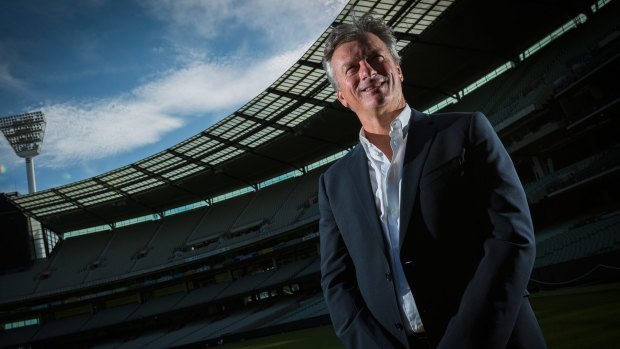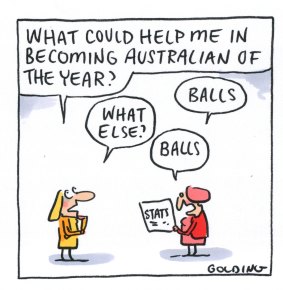By Matt Wade and Samuel Roberts
- Premier sounds warning during Australia Day address
- Comment: Putting a bit more kitsch on the barbie
- Comment: Patriots need to find better angels
It's arguably the nation's most prestigious alumni. But what type of person is most likely to be named Australian of the Year on Monday? If the past is any guide, the chances are it will be a male from NSW who is good at sport.
In the 55-year history of the Australian of the Year awards, 79 per cent of the recipients have been men and nearly one-quarter are sports stars. Analysis by the Herald also shows candidates from NSW are also over-represented in the statistics.
The second largest group of recipients after sports stars have a background in science or medicine (20.3 per cent) while artists and entertainers are the third most common recipients (18.6 per cent).
The chief executive of the National Australia Day Council Jeremy Lasek said the high proportion of recipients known for their sporting prowess revealed something about our national identity.

Male, from NSW, and good at sport: Steve Waugh, the 2004 Australian of the year. Credit: Chris Hopkins
"We are a sports-mad country, it is celebrated by Australians and reflected in the awards," he said.
The council is responsible for selecting the award recipient from the various state nominees, who are in turn chosen by an expert panel in each state which assesses nominations submitted by the public.
Mr Lasek said the enormous gender disparity in award recipients was "very disappointing".
"We agree there is an imbalance and we encourage more females to be nominated each year," he said.

Illustration: Matt Golding
This gender gap is not simply the result of outdated beliefs in the early years of the award's history. Only two of the 10 most recent recipients have been women.
Despite the skewed gender balance, Mr Lasek says the committee will not try to compensate for the inequity and will instead ensure the process "remains fair and democratic".
The Young Australian of the Year, first awarded in 1979, has a better, if not perfect, gender balance – 56 per cent have been men.
About one in seven Australian of the Year recipients are from the Indigenous community even though Aboriginal and Torres Strait Islander peoples make up about one in 40 of Australia's population.
Fewer than one in 10 recipients had a background in politics and the public service. Two religious leaders (3.4 per cent of the total) have had the honour, both of them from Christian denominations.
Residents of NSW make up 40 per cent of all recipients even though that state is home to only about one-third of Australia's population.
Mr Lasek said one possible explanation for this was the presence of more "leading universities and better access to sporting facilities" in NSW compared with some other states. No Tasmanian resident has yet been named Australian of the year.
Although sports stars make up the biggest proportion of Australian of the year recipients overall, their dominance has started to wane recently. They received four of the 10 awards during the 1960s but only one sports star – Adam Goodes – has received the gong during the past decade.
Mr Lasek says a broader contribution to community has been a factor in most sports stars receiving the honour.
"For [Adam] Goodes it was not simply his football, it was his leadership, charity work and efforts with the Indigenous community … he might be seen as a sportsman but he is so much more," Mr Lasek said.